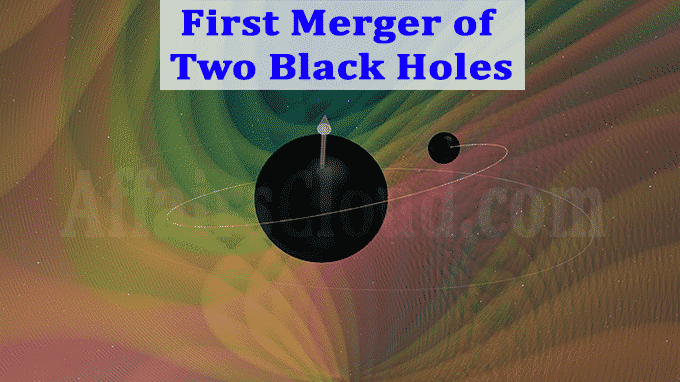On April 18, 2020, the Laser Interferometer Gravitational Wave Laboratory (LIGO) Scientific Collaboration and the Virgo Collaboration also known as LVC (LIGO Scientific Collaboration and Virgo Collaboration)discovered binary black hole (BBH) merger with different masses for the first time. This study has been published in preprint server ArXiv.
- This discovery took place a year after when a gravitational wave (GW) signal dubbed “GW190412”observed by the LIGO and Virgo detectors on 12 April 2019, which was actually a sign of merging of two black holes with unequal masses. This merger took place 2.4 billion light years away.
- Importantly, the difference of masses is so large that the one black hole is 30 times the mass of the sun while the other is 8 times the solar mass.GW190412 took place about 1.9 to 2.9 billion light-years from Earth.
About GW190412:
Observed on April 12, 2019, this signal was detected by 3 detectors; two LIGO detectors in the USA and Virgo in Italy. At that time, it was a prediction that this is coming from a BBH system with unequal masses, one of the black holes being about 3.6 times heavier than the other. But now, it is confirmed that GW190412 signal produced because of uneven BBH merger occurring at that time.
Why is the merger of unequal-mass black holes important?
This uneven merger has empowered more precise measurements of the system’s astrophysical properties and has also enabled the LIGO and Virgo scientists to verify a yet-untested prediction of Einstein’s theory of general relativity.
Point to be noted:
The first gravitational-wave event was detected in 2015 namely “GW150914”. However, all the systems observed so far have comprised black holes of nearly equal masses. This trend was broken by the observation of the merger of a BBH system on April 12, 2019.
Indian contributed in analysis of uneven BBH merger:
-K.G. Arun of Chennai Mathematical Institute (CMI)
-AnandSengupta of IIT Gandhinagar
-Soumen Roy from IIT Gandhinagar
-Researchers from International Centre for Theoretical Sciences (ICTS)- Tata Institute of Fundamental Research (TIFR), Bengaluru, Karnataka.
What is Black Hole?
A black hole is a region of spacetime where gravity is so strong that nothing, no particles or even electromagnetic radiation such as light, can escape from it. A black hole can be formed by the death of a massive star.
About LIGO Scientific Collaboration (LSC):
Headquarter– United States
Spokesperson– Prof. Patrick Brady
About Virgo Collaboration:
Headquarter– Santo Stefano a Macerata, Cascina, Italy
Spokesperson– Giovanni Losurdo




